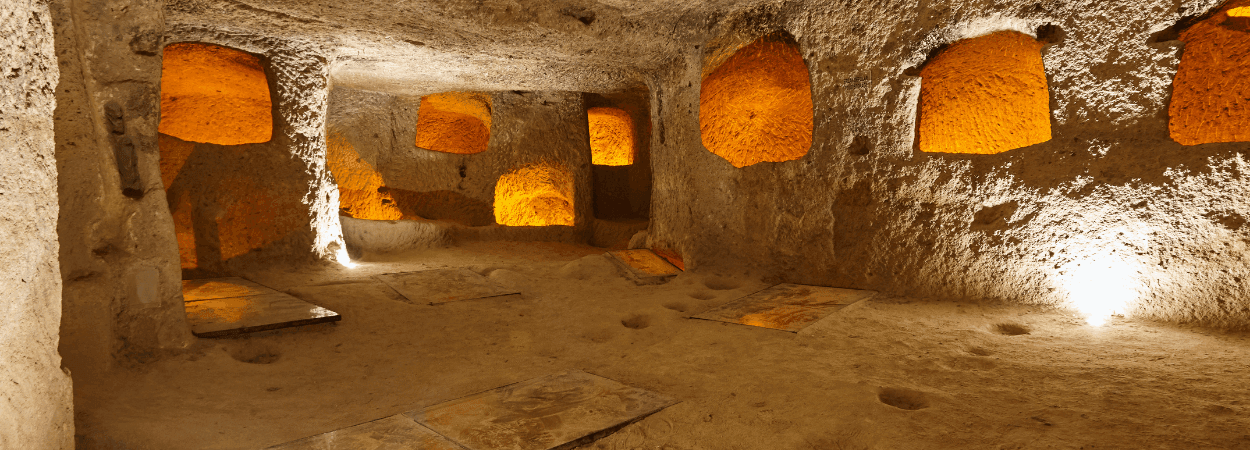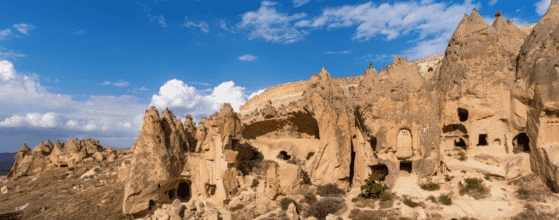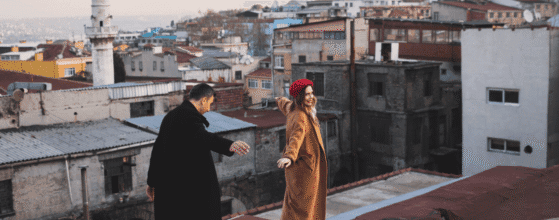The Underground Cities of Cappadocia, located in central Turkey, are among the region’s most fascinating features. While Cappadocia is renowned for its surreal landscapes, fairy chimneys and ancient cave dwellings, it’s what lies beneath the surface that truly captivates — vast subterranean cities carved into soft volcanic rock. These mysterious underground worlds have drawn the attention of historians, archaeologists, and travelers alike, offering a unique glimpse into the past.
The Fascinating History of Cappadocia’s Underground Cities
The underground cities of Cappadocia date back thousands of years, with origins tracing as far back as the Hittite Empire (1600 BCE). However, they reached their peak usage during the Byzantine era, between the 4th and 11th centuries CE. These multi-level complexes served as hidden sanctuaries for civilizations escaping wars, persecution, and invasions.
Carved entirely into the soft tuff rock, these cities reflect ingenuity and adaptability. Over time, Cappadocia’s underground settlements became crucial for survival, offering refuge to early Christians during Roman rule, and later providing refuge from Arab raids.
Why Were These Cities Built Underground?
The underground cities were primarily built for protection. Early inhabitants of Cappadocia faced constant threats, including foreign invasions, political unrest and religious persecution. The underground structures allowed entire communities to live undetected for extended periods. Additionally, the subterranean environment provided natural protection against harsh weather conditions. The underground cities maintained a stable temperature throughout the year, keeping the inhabitants cool during summers and warm during winters.
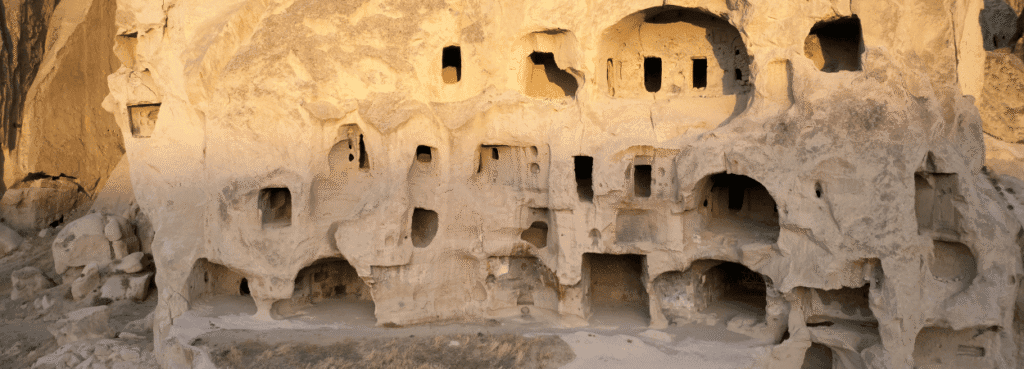

The Role of Geography in Their Construction
Cappadocia’s unique geography played a crucial role in the creation of these underground cities. The region is characterized by tuff — a soft volcanic rock formed by ancient eruptions. This material is easy to carve but solid enough to support tunnels, rooms and ventilation shafts. The natural durability of tuff allowed people to expand these subterranean networks over generations.
With deep wells for water supply, chimneys for ventilation, and stone doors to secure entrances, the underground cities were both functional and safe.
The Most Famous Underground Cities to Visit
Cappadocia is home to over 200 underground cities, but a few stand out for their size, historical significance and accessibility to visitors.
Derinkuyu Underground City
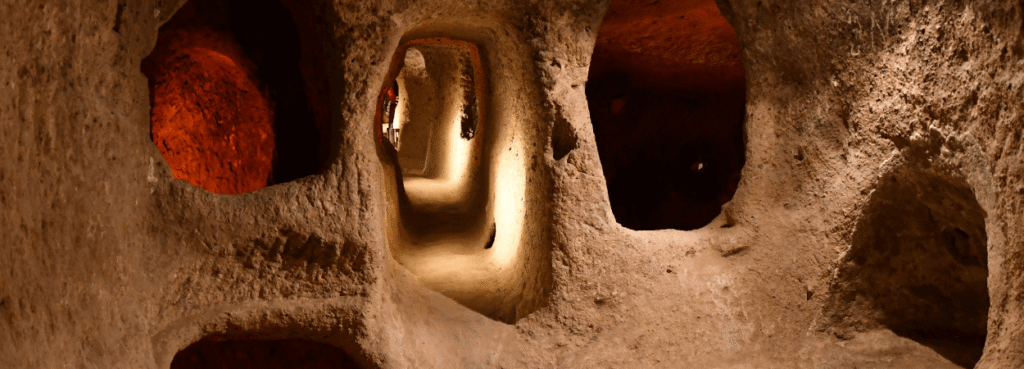

Kaymaklı Underground City
The widest underground city in Cappadocia that features numerous tunnels connecting its different levels. Visitors can explore living spaces, stables and wineries that demonstrate how residents maintained their daily lives underground.
Özkonak Underground City
Known for its unique communication systems and defensive traps, Özkonak offers an intimate look into the ingenuity of its builders. Small holes carved into walls allowed residents to communicate across different levels without revealing their positions.
Underground Cities of Cappadocia is an essential part of our Cappadocia Private Tours. You can explore our Cappadocia Private Tours here.
Life in Cappadocia’s Underground Cities
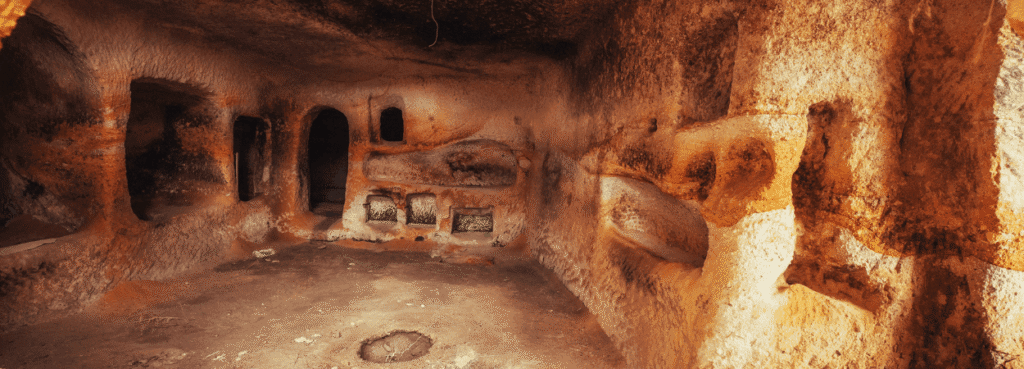

Large storerooms preserved food supplies such as grains, dried fruits, and meats, while wells provided fresh water. Hidden ventilation shafts ensured a constant flow of air, maintaining a livable environment. Spiritual life was equally important, as many cities included chapels and churches adorned with frescoes.
For security, massive circular stone doors sealed entrances to protect against intruders, and traps along with false tunnels added extra layers of defense. The clever design of these structures showcases the resilience and ingenuity of the people, who transformed an underground existence into a vibrant community.
Visiting the underground cities is an unforgettable experience, and knowing the best time to visit Cappadocia will make your journey even more special.
Exploring Today: What to Expect as a Visitor
Visiting Cappadocia’s underground cities feels like stepping into another world. Many of these ancient sites are now open to tourists, offering a fascinating journey into history. As you descend into the depths, be prepared to walk in narrow tunnels, steep stairs, and multi-level rooms — so comfortable shoes and a sense of adventure are essential.
For more practical advice on clothing and travel essentials, check out our “What to Wear in Turkey” guide.
Local guides enrich the experience by sharing valuable insights into the history, architecture and significance of these structures, ensuring you don’t miss hidden details or key highlights. While modern lighting has been installed for safety and visibility, some areas remain dimly lit to preserve their authentic atmosphere.
Exploring underground cities offers a unique opportunity to witness human ingenuity, history and survival.
